On June 26, ultrarunner Jamie Aarons set a world record for scaling all 282 Munros — mountains in Scotland that are taller than 3,000 feet. She compressed what many hikers set as a lifetime goal into just one month, completing the self-propelled circuit (traveling only by foot, bike and kayak) in 31 days, 10 hours and 27 minutes.
Yet, ironically, Aarons says, the most valuable lesson she learned was the importance of slowing down. “I’m not fast, but I have endurance,” she says, “and I’ve built that endurance up over the years.”
A competitive swimmer in her youth, Aarons ’01 started running in her spare time as an undergraduate at Northwestern, where she studied human development and psychological services, and then as a graduate student at Columbia University, where she earned a master in social work, and Bank Street College, where she earned a master in education. But when she discovered trail running in 2008, that’s when the sport started to feel fun.

Jamie Aarons strides along a grassy stretch of mountain with a body of water behind her and a rainbow stretching into the sky. Here, she is scaling Beinn na Lap in Scotland’s Grampian Mountains, part of the Munros (mountains in Scotland that rise above 3,000 feet). Photo credit: Tamsin Cass
“Suddenly running wasn’t a chore,” says Aarons, who had moved to Scotland in 2005 with her partner, Andy Taylor. Long-distance running prioritizes endurance over speed, and the slower pace enables more social interaction, says Aarons. “If I’m going so fast that I can’t have a chat, I’m going too fast,” she says.
In 2013, while Aarons was working for a local municipality in Scotland as a frontline social worker for adults with disabilities, she learned about the Munros — a common challenge for the nation’s hikers. That year, she and Taylor began devoting their weekends to Munro climbing. By the end of the year, they’d joined the Scottish Mountaineering Club’s list of more than 7,400 hikers who have climbed all 282 Munros (named for British mountaineer Sir Hugh Munro, who produced the first list of 3,000-foot hills). They scaled all the Munros again between 2016 and 2020 with their two rescue dogs.
But Aarons hadn’t considered doing a continuous, self-propelled — climbing all the summits back-to-back, using only human-powered transportation to get from mountain to mountain — until she listened to a podcast interview in 2020 with then–record-holder Donnie Campbell, who climbed all the Munros in just under 32 days. A few months later, Aarons still couldn’t get Campbell’s story out of her mind.
So she resolved to take up the Munro challenge herself. She spent two years planning her trek and amassed a volunteer support team of more than 100 people, including landowners and farmers who agreed to facilitate bicycle drop-offs and crew pick-ups along Aarons’ route. “I wanted to do this as a collective, even though I was the only one doing the whole [trek],” Aarons says.
Together, she and friend Jenny Allen traced her route across five maps of Scotland, using Lego minifigures and board game pieces to represent bikes, kayaks and support team members. They also started an online fundraising campaign for World Bicycle Relief, a Chicago-based nonprofit that provides bicycles to people in developing countries to increase access to education, employment and health care.
Aarons’ trek began in May 2023. In total, she ascended approximately 444,000 feet (the equivalent of climbing Mount Everest nearly 16 times) and traveled 817 miles by foot, 776 miles by bike and seven miles by kayak. She climbed an average of nine Munros per day. On her fastest day, she cleared 14 mountains in 24 hours. But Aarons wasn’t necessarily aiming for the record. In fact, her strategy in the first half of her trek was to be as cautious as possible to avoid early injury. That meant staying out of the “race zone” mentality to preserve energy.
“It was rare that I ever thought about the challenge in its entirety,” she says. “I took things one hill at a time. When I started to think too far ahead [or think], ‘I'm going too slowly’ … it would snowball into high anxiety.”
Instead, she learned to be present in the moment. “Every hill, even the most difficult ones, had some degree of enjoyment, some degree of positivity, some element of joy,” she says. “Some of those sections were absolute struggles. And yet, [at the peak you’d see a] sunrise that you couldn’t paint in your wildest dreams.”
To maximize her time on the trail, Aarons slept an average of just four hours a night. She sometimes took 60-second power naps, a skill she discovered in her years of running multiday adventure races. Before the Munro challenge, “I knew … that I could get through a week on incredibly limited sleep, but whether … I could extend that any further was a huge unknown,” she says. “I [was glad I had power napping] in my back pocket as a sort of superpower.”
Aarons endured blistering heat during the first half of the trek and developed a nagging pain in her left foot during the second. A month of walking trailless routes, forging through bogs, tussocks and tall ferns, and evading midge swarms wore on her body. “I was in pain. I was exhausted. I was moody. I was hungry,” she says. But as she closed in on the final few summits and realized the world record was within her grasp, she felt an “overwhelming sense of gratitude and pride.
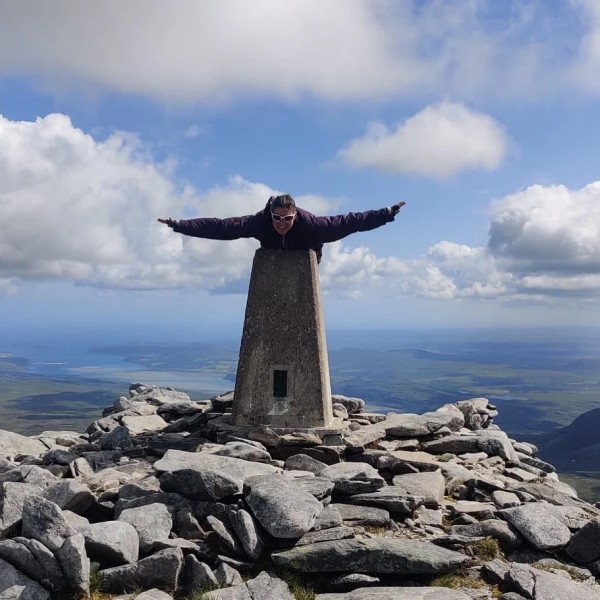
Jamie Aarons balances atop a pillar on Ben Hope, her second-to-last peak. Photo Credit: Alex Kane.
“It’s really easy to take people or things or experiences for granted,” Aarons says. It makes a big difference, she adds, “when you say, ‘Thank you,’ when you acknowledge that ‘You being here really means a lot to me.’ I don’t let those moments pass me by unnoticed.”
Aarons beat Campbell’s world record by more than 12 hours. And with her online followers backing her cause, she more than tripled her fundraising goal, raising more than $33,000 for World Bicycle Relief.
Aarons, a native Californian, and Taylor plan to stay in Scotland for the foreseeable future — in large part because the country’s outdoor access law, the Land Reform (Scotland) Act of 2003, grants a nationwide “right to roam,” which accommodates their adventurous hobbies. Aarons’ next challenge is to finish climbing all the Corbetts, a class of mountains in Scotland measuring 2,500 to 3,000 feet. Of 222 Corbetts, she has only 15 left — but she’ll be completing those at a “leisurely pace.”
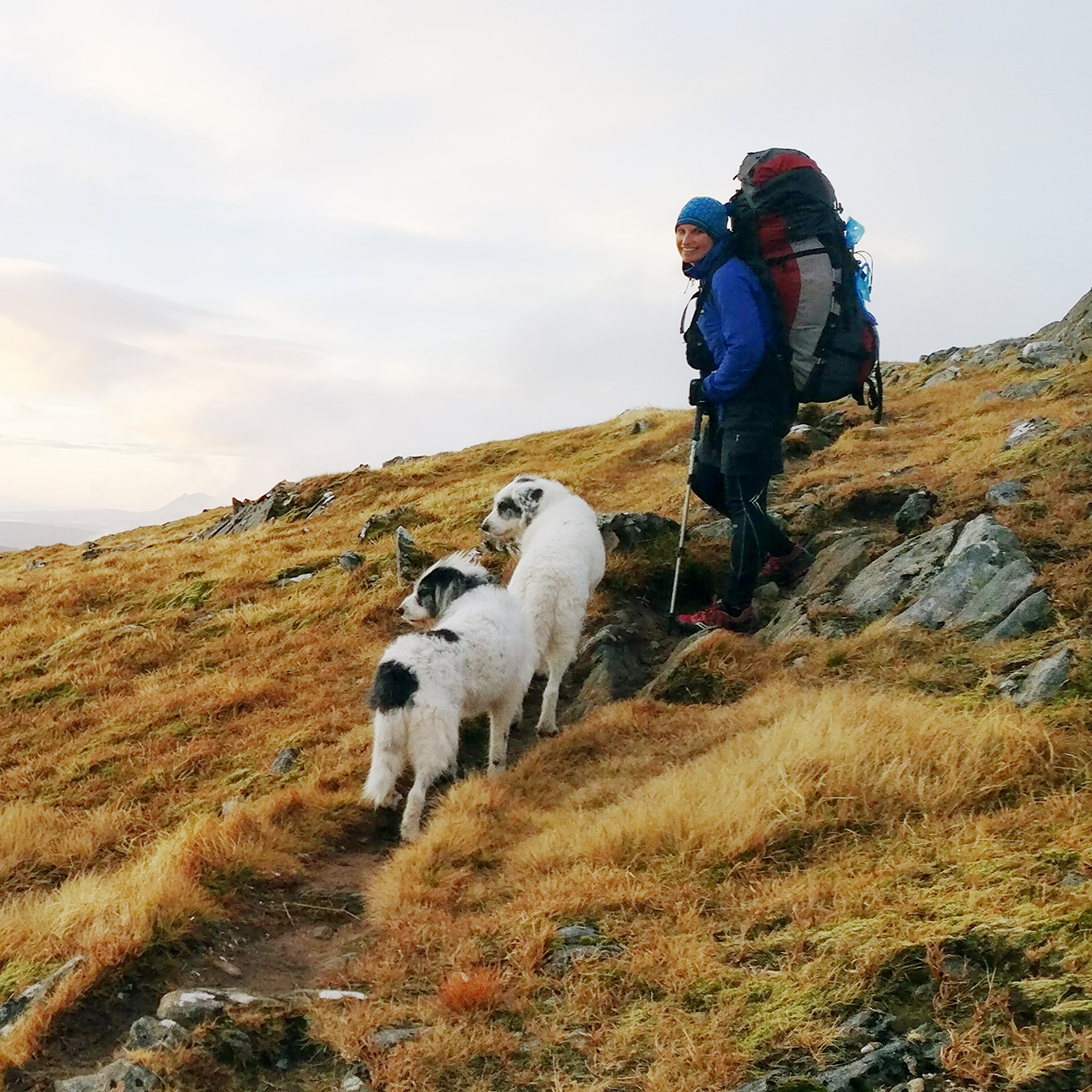
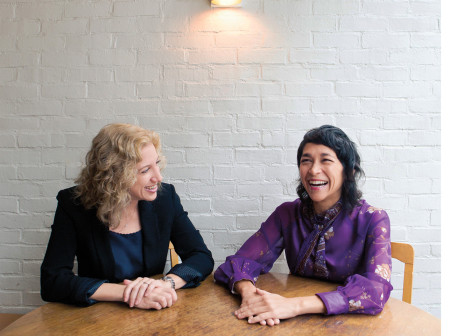
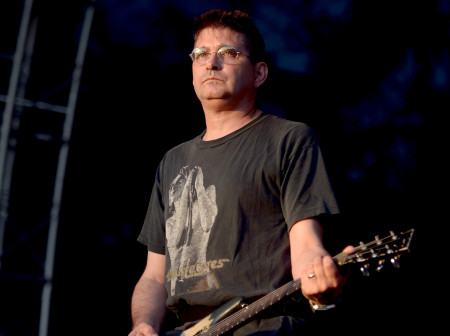
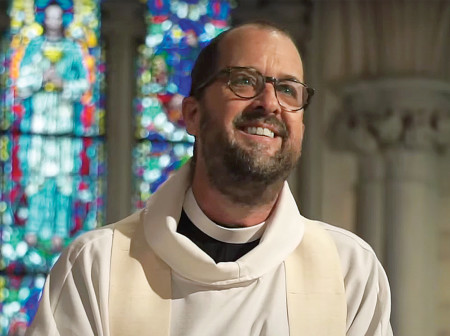
Reader Responses
No one has commented on this page yet.
Submit a Response